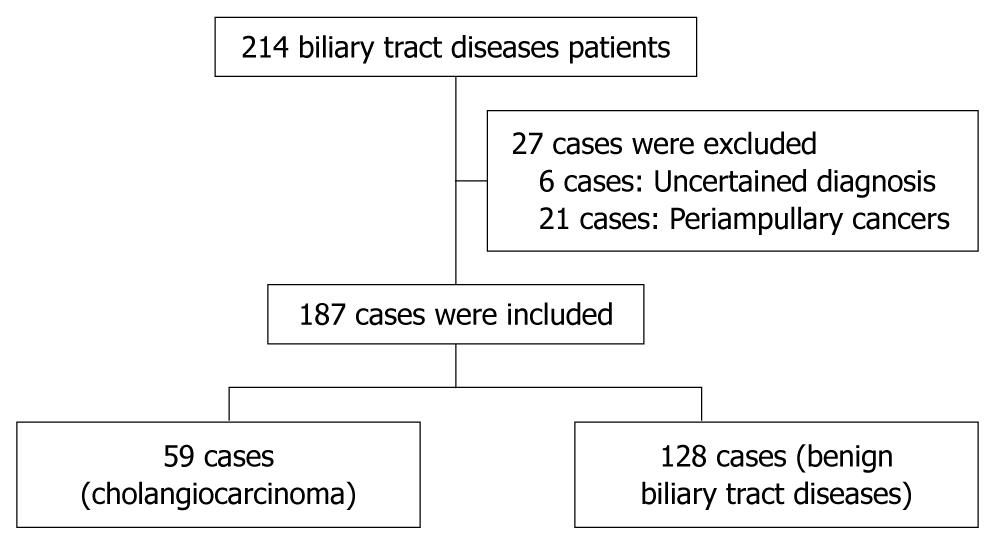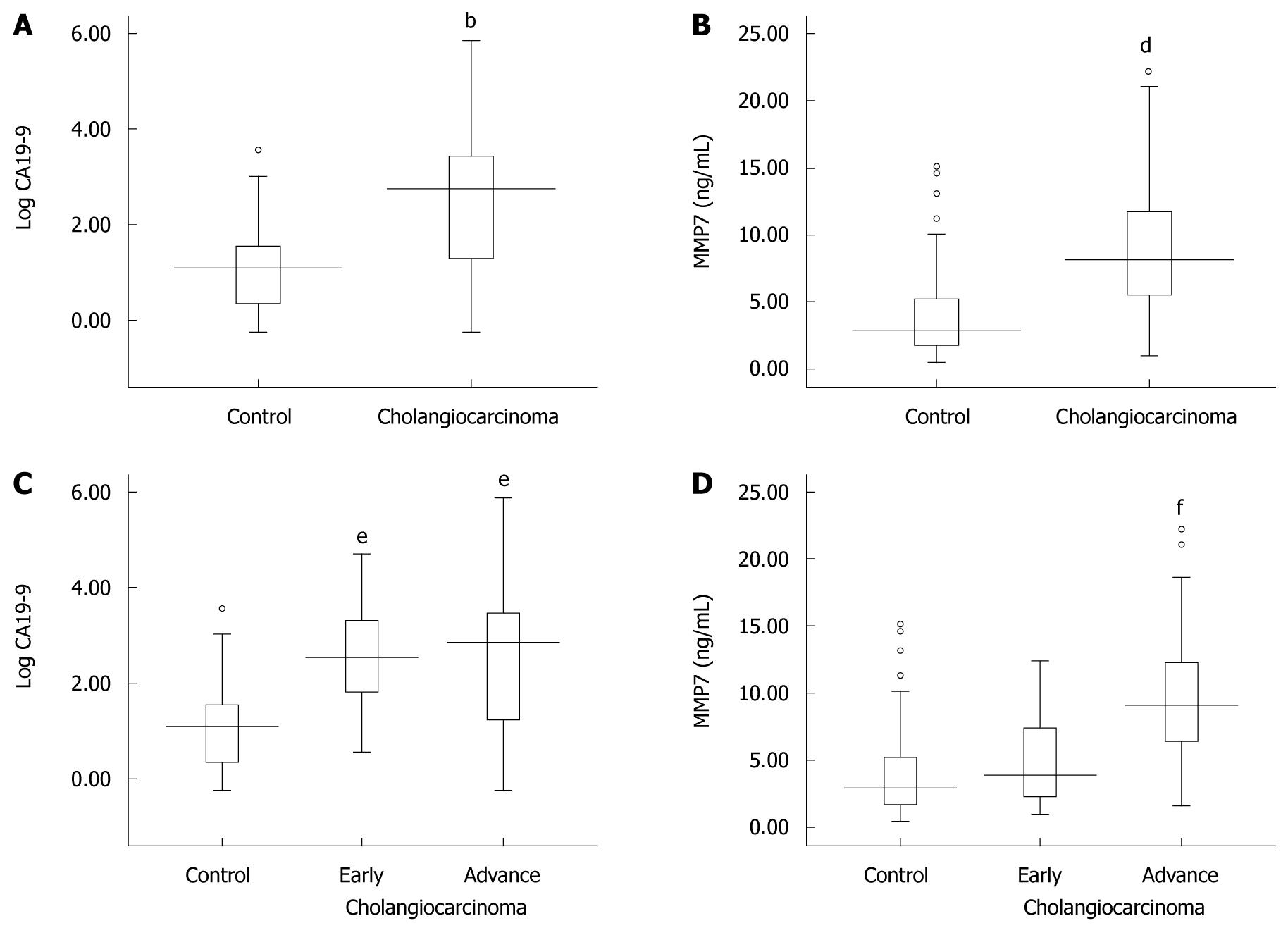Copyright
©2010 Baishideng Publishing Group Co.
World J Gastroenterol. Oct 7, 2010; 16(37): 4697-4703
Published online Oct 7, 2010. doi: 10.3748/wjg.v16.i37.4697
Published online Oct 7, 2010. doi: 10.3748/wjg.v16.i37.4697
Figure 1 A flow diagram of 187 obstructive jaundice patients who were consecutively enrolled in this study.
Figure 2 Serum levels of carbohydrate antigen 19-9 and matrix metalloproteinase-7 in cholangiocarcinoma and control (benign biliary tract disease) patients.
A: Box plots comparing levels of carbohydrate antigen 19-9 (CA19-9); B: Matrix metalloproteinase-7 (MMP7) between cholangiocarcinoma and control patients are illustrated; C: Box plots comparing levels of CA19-9; D: MMP7 between early and advanced stages of cholangiocarcinoma and controls are illustrated. Levels of MMP7 are presented as ng/mL, while CA19-9 is presented with the log data to accommodate the wide range. (bMann-Whitney U, P < 0.001 vs control; dStudent's t-test, P < 0.001 vs control; eKruskal Wallis test, P < 0.001 vs control; fANOVA, P < 0.001 vs control).
Figure 3 Receiver operating characteristic curve analyses of carbohydrate antigen 19-9 and matrix metalloproteinase-7 for the diagnosis of cholangiocarcinoma.
The diagnostic accuracy of each biomarker, in terms of its sensitivity and specificity, are presented by receiver operating characteristic curve analysis. MMP7: Matrix metalloproteinase-7; CA19-9: Carbohydrate antigen 19-9.
- Citation: Leelawat K, Narong S, Wannaprasert J, Ratanashu-ek T. Prospective study of MMP7 serum levels in the diagnosis of cholangiocarcinoma. World J Gastroenterol 2010; 16(37): 4697-4703
- URL: https://www.wjgnet.com/1007-9327/full/v16/i37/4697.htm
- DOI: https://dx.doi.org/10.3748/wjg.v16.i37.4697











